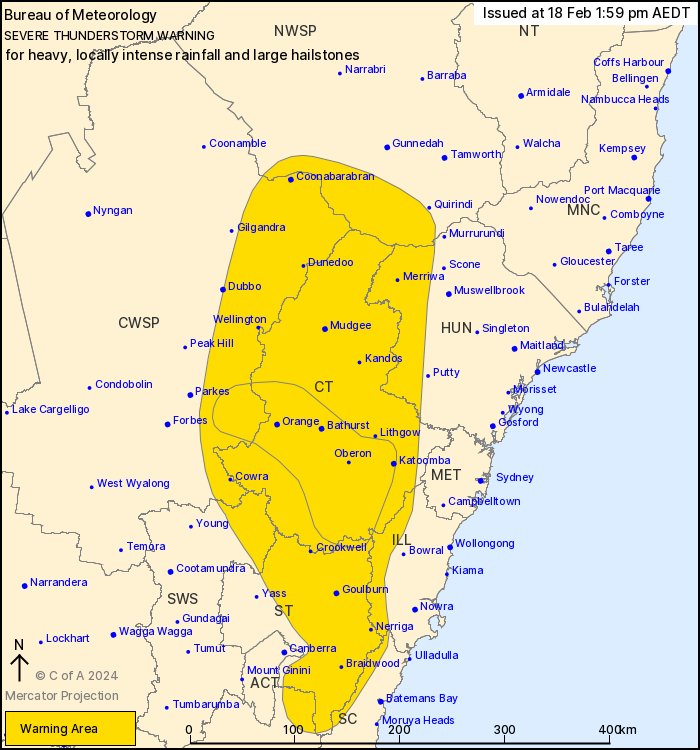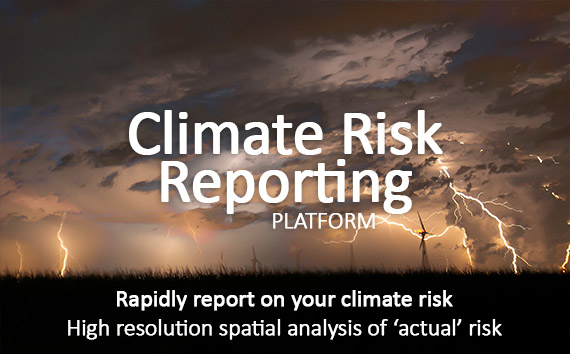Source: Bureau of Meteorology
For people in Central Tablelands, Southern Tablelands and parts of
Hunter, Illawarra, South Coast, North West Slopes and Plains,
Central West Slopes and Plains, South West Slopes and Snowy
Mountains Forecast Districts.
Issued at 1:59 pm Sunday, 18 February 2024.
HEAVY TO LOCALLY INTENSE RAINFALL OCCURRING ACROSS CENTRAL EASTERN
NEW SOUTH WALES
Weather Situation: Slow moving severe thunderstorms are developing
in a humid and unstable airmass along the Great Dividing Ranges
this afternoon.
VERY DANGEROUS THUNDERSTORMS are likely to produce heavy, locally
intense rainfall that may lead to dangerous and life-threatening
flash flooding and large hailstones over the next several hours in
parts of the Central Tablelands, Illawarra, Southern Tablelands and
Central West Slopes and Plains districts. Locations which may be
affected include Orange, Bathurst, Katoomba, Blayney, Trunkey Creek
and Taralga.
Elsewhere in the warning area, severe thunderstorms are likely to
produce large hailstones and heavy rainfall that may lead to flash
flooding over the next several hours in the Central Tablelands,
Southern Tablelands and parts of the Hunter, Illawarra, South
Coast, North West Slopes and Plains, Central West Slopes and
Plains, South West Slopes and Snowy Mountains districts. Locations
which may be affected include Mudgee, Goulburn and
Wellington.
59 mm recorded at Orange Airport in the 2 hours to 1:42 pm.
The State Emergency Service advises that people should:
* Move your car under cover.
* Keep clear of creeks and storm drains.
* Don't walk, ride your bike or drive through flood water.
* If you are trapped by flash flooding, seek refuge in the highest
available place and ring 000 if you need rescue.
* Be aware that run-off from rainfall in fire affected areas may
behave differently and be more rapid. It may also contain debris
such as ash, soil, trees and rocks.
* After bushfires, heavy rain and the loss of foliage can make the
ground soft and heavy, leading to a greater chance of
landslides.
* Unplug computers and appliances.
* Avoid using the phone during the storm.
* Stay indoors away from windows, and keep children and pets
indoors as well.
* Stay vigilant and monitor conditions. Note that the landscape
may have changed following bushfires.
* For emergency help in floods and storms, ring the SES (NSW and
ACT) on 132 500.

18/Feb/2024 03:38 AM



